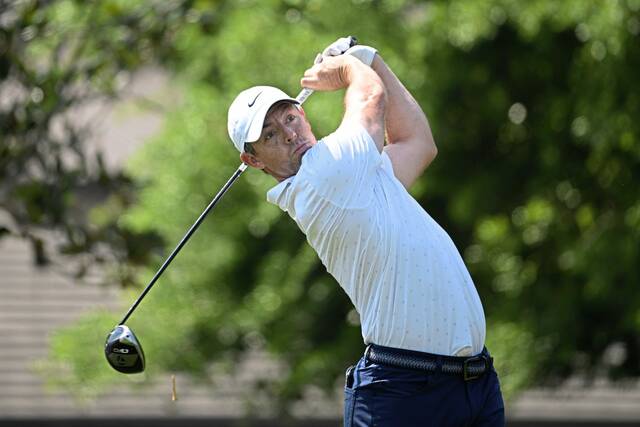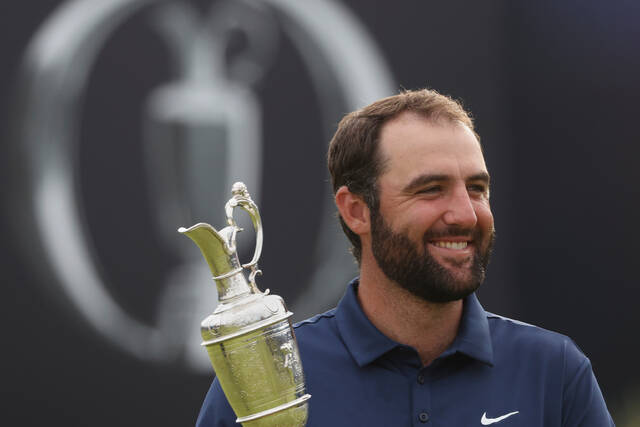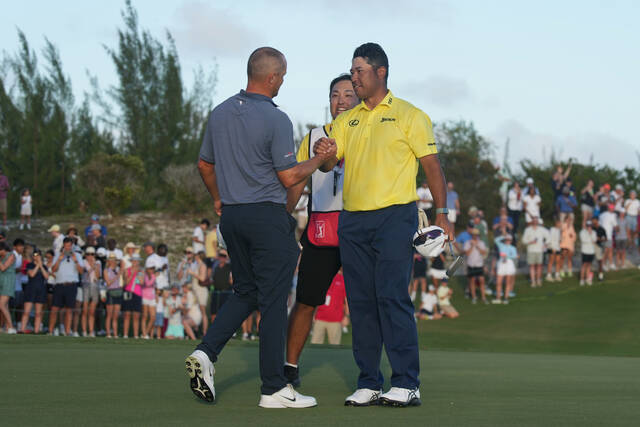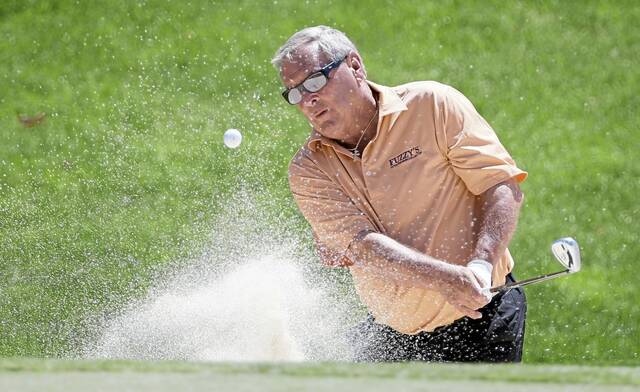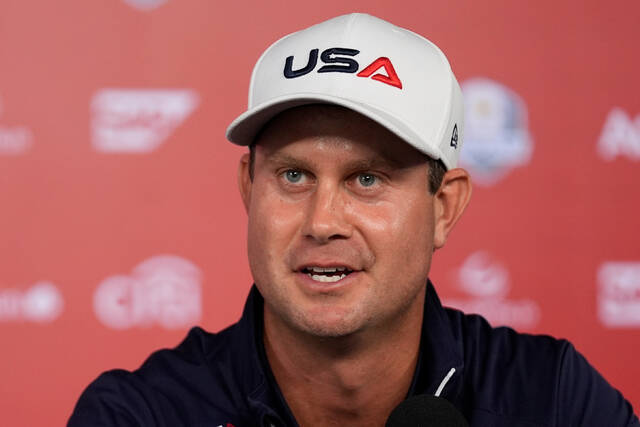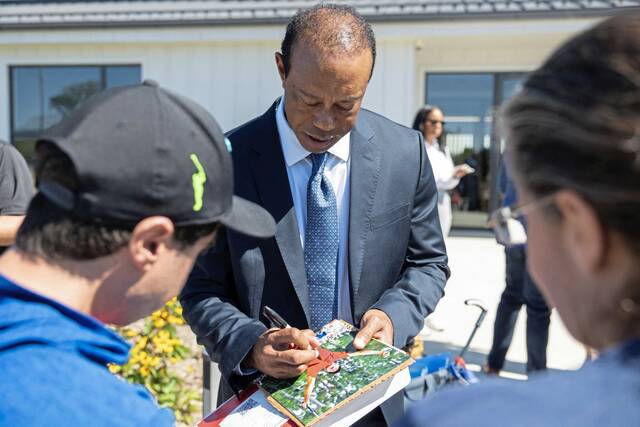On his way to becoming a two-time major champion, John Daly lived by the mantra “grip it and rip it.” His big drives and big personality made him one of the most popular — if not polarizing — players in golf.
As he forged arguably the greatest career in golf history, Tiger Woods brought fitness and weight training to the game, using his booming drives to shorten courses. That eventually led many venues to “Tiger-proof,” i.e., add length.
By shortening their approach shots, players are able to go aggressively at more pins to give themselves a better chance at birdie or even eagle.
According to the USGA record book, Oakmont Country Club is nowhere to be found on the list of longest U.S. Open courses. The USGA began tracking daily course yardages at U.S. Opens in 2007 at Oakmont. And while its famous par-3 eighth and par-5 12th rank as some of the longest in U.S. Open history, the layout overall is, relatively speaking, short.
For this year’s U.S. Open, Oakmont will measure 7,372 yards.
“For these players, this is not a long golf course,” said Jeff Hall, USGA managing director of rules and open championships.
That should allow big hitters such as Rory McIlroy, Bryson DeChambeau and Min Woo Lee to bring the famed Oakmont layout to its knees.
Or will it?
To hear those who have played in U.S. Opens at Oakmont Country Club talk, big drives and aggressive play probably aren’t the way to go.
Paula Creamer famously won the 2010 U.S. Women’s Open at Oakmont with a surgically repaired left thumb that was heavily bandaged. Creamer said the injury helped her in the long run, forcing her to be more conservative in her shot-making.
“I’ve always been a very aggressive player,” Creamer told TribLive. “If I feel like if I can hit the shot, I’m going to hit it. And sometimes that’s not always the smartest thing to do in certain situations. In U.S. Opens, they sucker you into that.
“The USGA has always put bait out there, and I was always going for it and it doesn’t always get the best side of me, so that one week we decided, this is what we’re going to do, this is our game plan. … At some golf courses (a par) is actually a great thing, and Oakmont is a prime example of that.”
D.J. Brigman, who finished tied for 30th at the 2007 U.S. Open, said he would designate how he attacked pins by using a system of green, yellow and red flags in his notes. That summer at Oakmont, he said he had maybe three or four pins designated green.
With that in mind, he said, hitting it longer doesn’t necessarily give a player a leg up.
“The advantage of hitting it a long ways is not as great at a lot of venues,” Brigman told TribLive. “I think you saw that at Pinehurst (last year) where Bryson was hitting driver everywhere, and it turned into an advantage that, ultimately, allowed him to win.
“Whereas Oakmont, you’re going to see guys dialing back on certain holes and playing to bigger parts of the fairways.”
Larry Nelson’s effort in winning the 1983 U.S. Open at Oakmont could serve as a blueprint for the 2025 tournament. Nelson won by playing the best back-to-back rounds in the history of Oakmont Opens, going 65-67 over the final 36 holes to defeat Tom Watson by a stroke.
In fact, Nelson’s total of 132 is a record for the final two rounds of a U.S. Open, and only two 36-hole totals in the history of the tournament have been lower: Martin Kaymer’s 130 on the first 36 holes at Pinehurst No. 2 in 2014 and McIlroy’s 131 on the first 36 holes at Congressional in 2011.
Nelson said he missed one fairway over the final 36 holes, and the only bogeys he made were 3-putts. And he barely used his driver all week.
All that said, Nelson understands how the game has changed in the 42 years since his win at Oakmont.
“The equipment has made golf courses shorter,” he told TribLive. “These guys are hitting 3-irons where I was hitting 3-woods. … We’ve seen a difference in guys these days — stronger, bigger, taller — that they can hit it as far as they want to because they can get it out of the rough.”
That might be so, but it comes with a caveat. Given the inevitably high rough coupled with Oakmont’s notoriously difficult greens, counting on getting up-and-down from off the fairway isn’t necessarily the correct strategy.
“They’re aggressive because they know that they can do it, and they have the shot.” Creamer said. “It might not come off every time, but three out of five times it’s coming off. But those two times, who knows where it’s going?”
This is where patience and strategy become paramount. Because at Oakmont, it isn’t just about hitting the target. It’s knowing where a target can be missed and not be penal.
Nelson said he likens Oakmont to Augusta National in that respect. Hit it in the right spot, and birdies are there for the taking. Hit it in the wrong spot and bogeys — or worse — are inevitable.
That goes for the tee shots and the approach to the green.
“Even though (the pins) may look like they’re inviting, if you did get aggressive and you missed it on the short side, then you were struggling to make par,” Brigman said about his experience at Oakmont in 2007. “You have to be very patient and very disciplined on that golf course.”
Jeev Milkha Singh, who played in the past two Opens at Oakmont and finished just behind Brigman in 2007, said the course forces players to think their way around rather than bash their way around. He said a course such as Oakmont needs to be treated with respect.
“You have to plan, and sometimes when you have to take your medicine by playing for a bogey, you’ve got to take that,” said Singh, who peaked at No. 28 in the world in 2009. “If you try to overpower it and get too smart with it, it’s going to bite you.”
Added Brittany Lang, who finished fifth in the 2010 Women’s Open: “You’ve got to think 97% of the time, these top players, it’s foot on the pedal, aggressive as possible and they’re winning tournaments. But for this tournament, most U.S. Opens, you can’t.”
Lang used the phrase “plot your way around” when talking about how to approach Oakmont. Today’s players are “plotting” more than ever. With statisticians in their camp, they can play percentages.
Sweden’s Niclas Fasth finished fourth at Oakmont in 2007, and he has spent time working with current world No. 6 Ludvig Aberg in their country’s national golf program. With so much data at their disposal, Fasth said, players are able to play aggressively without being reckless.
“They play differently these years, and it comes out as being super aggressive,” Fasth told TribLive, “and it is. But the target is not always the pin. They go up and hit an aggressive shot to wherever they’ve decided to play. It’s so much statistics-based.
“Most shots are carefully calculated. They will more often at Oakmont play away from the pin than they would at an average tournament. But there will be pins where they will say, yeah, we have the margins we need, so we can go for that pin. It may look tight. It may look like a fantastic shot on TV, but it was calculated.”
Nelson, who competed in 70 major championships and won three in his career, said he is looking forward to watching how various players attack Oakmont. Each player will have his own style, and it remains to be seen which one prevails.
As to whether the “bombers” have any kind of advantage, the prevailing opinion seems to favor a more methodical approach over “grip it and rip it.”
“There are three defenses against any tour pro: long rough, firm greens and a little bit of weather, and Oakmont is going to provide that every time,” said Daniel Summerhays, who finished tied for eighth at Oakmont in 2016. “So the bomb-and-gouge really isn’t going to work because then you’re going to have really firm greens.
“More than any other course, it is ‘bomb proof,’ if you want to call it that way. You can’t just go out there and smack it around. … You’re not going to overpower that golf course by any means.”



